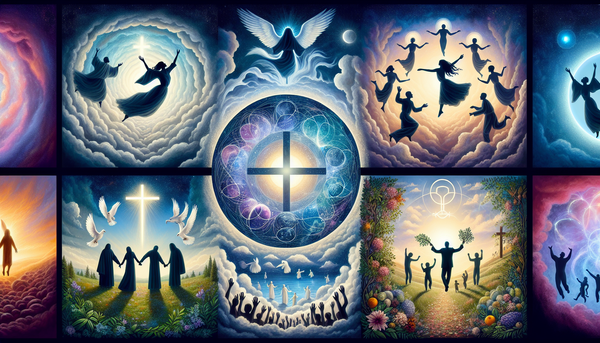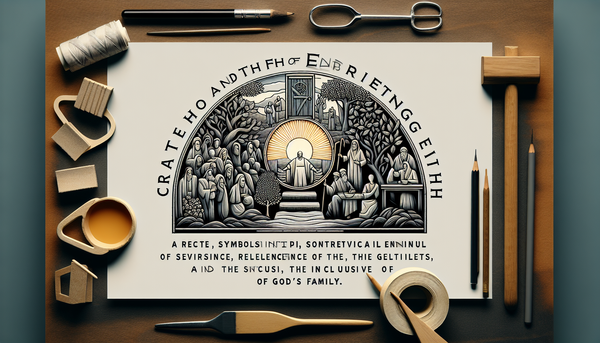In this thoughtful journey through scriptural interpretation and application, we embark on an exploration of four captivating biblical themes that have intrigued and inspired countless believers across time. We begin with the mysterious and prophetic concept of the Rapture, a moment where faith is said to intersect with eternity. We then move to the rhythmic celebrations of dance as an expression of joy and worship within the biblical narrative. Our path takes a turn towards the solemn and critical pursuit of peace, drawing from ancient wisdom to address contemporary conflicts. Finally, we contemplate the rich symbolism of halos in religious art, a visual testament to the divine that transcends the written word. Each of these subjects offers a unique lens through which to view our faith, challenging us to deepen our understanding of the Bible's timeless teachings.
Table of Contents
The Rapture: A Moment of Transformation
The Rapture, as described in 1 Thessalonians 4:16-17, captures the imagination with its dramatic portrayal of believers being caught up to meet the Lord in the air. This moment is further elaborated in 1 Corinthians 15:51-52 where we read of the transformation that will take place in the twinkling of an eye, as the living are changed and the dead in Christ rise. Matthew 24:30-31 adds to the narrative by depicting Jesus Christ's own words about the gathering of His elect. Yet, this topic is not without controversy, as scholars and theologians debate the timing and nature of this event. Will it occur before, during, or after the Tribulation? How literally should these prophecies be taken? Despite the differences in interpretation, the overarching theme of the Rapture offers hope and deliverance from the coming judgment, providing comfort to believers with the promise of eternal life and union with Christ.
Seeking Peace: Biblical Guidance on Conflict Resolution
The Bible's teachings on peace are especially relevant in today's world fraught with conflict. Romans 12:18 exhorts us to live at peace with everyone, as far as it depends on us. This pursuit of peace is echoed in the Beatitudes, where Matthew 5:9 blesses the peacemakers. Jesus Christ, our peace, who tore down the walls of hostility as described in Ephesians 2:14, serves as the ultimate example of reconciliation. In the face of conflict, the Bible encourages believers to engage in prayer, seeking divine wisdom and discernment. As ambassadors of Christ, we are called to act justly, love mercy, and foster compassion, reflecting the heart of God in every situation and striving for resolutions that uphold the dignity and well-being of all involved.
Understanding the Symbolism of Halos in Religious Art
The halo, a circle of light traditionally depicted around the heads of saints and holy figures, is a symbol that has become synonymous with sanctity in religious art. While the Bible does not explicitly mention halos, this artistic convention has evolved to represent the divine light and purity that surrounds those close to God. The development of halo symbolism can be traced back through the history of Christian art, reflecting cultural influences and the human desire to visualize the sacred. Although halos are not a scriptural requirement, they serve as a visual language that communicates the idea of holiness and can play a role in teaching and reinforcing theological concepts. Through such symbolism, art has the power to convey aspects of faith that go beyond the words on a page.




